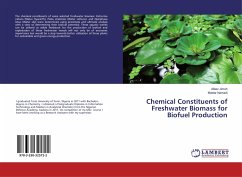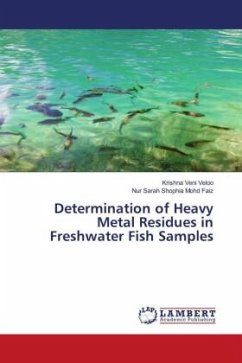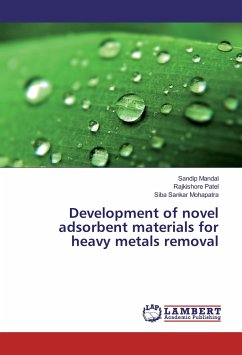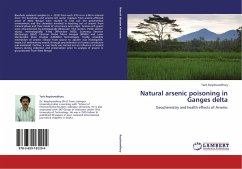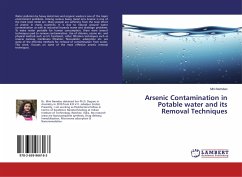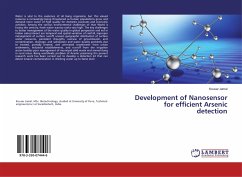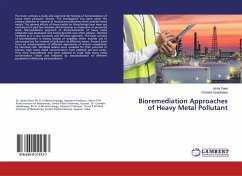
Arsenic in freshwater
Occurrence, Speciation and Remediation Using Aquatic Macrophytes
Versandkostenfrei!
Versandfertig in 6-10 Tagen
45,99 €
inkl. MwSt.

PAYBACK Punkte
23 °P sammeln!
Arsenic, a deadly toxic element, is widely distributed in freshwater systems with an average concentration of approximately 1.7 g/L, predominantly as inorganic forms, from natural and anthropogenic sources. Phytoremediation, a plant-based eco-friendly technology, is receiving increasing attention, and aquatic plants can be used for the remediation of arsenic-contaminated water. Water hyacinth (Eichhornia crassipes), duckweeds (Lemna spp., Spirodela polyrhiza), water fern (Azolla spp.), hydrilla (Hydrilla verticillata) and watercress (Lepidium sativum) have been studied to assess their potentia...
Arsenic, a deadly toxic element, is widely distributed in freshwater systems with an average concentration of approximately 1.7 g/L, predominantly as inorganic forms, from natural and anthropogenic sources. Phytoremediation, a plant-based eco-friendly technology, is receiving increasing attention, and aquatic plants can be used for the remediation of arsenic-contaminated water. Water hyacinth (Eichhornia crassipes), duckweeds (Lemna spp., Spirodela polyrhiza), water fern (Azolla spp.), hydrilla (Hydrilla verticillata) and watercress (Lepidium sativum) have been studied to assess their potential for arsenic phytoremediation. Arsenic is mainly taken up by aquatic plants through the phosphate uptake pathway, however, physico-chemical adsorption of arsenate on aquatic plant surfaces also contributes significantly in arsenic accumulation in the plants. Phosphate and iron influence arsenate uptake, while these chemicals do not influence arsenite, MMAA and DMAA uptake in aquatic plants.From my studies, I proposed that aquatic floating macrophytes such as duckweed (Spirodella polyrhiza) and water fern (Azolla pinnata) can be used for the remediation of arsenic from freshwater.



